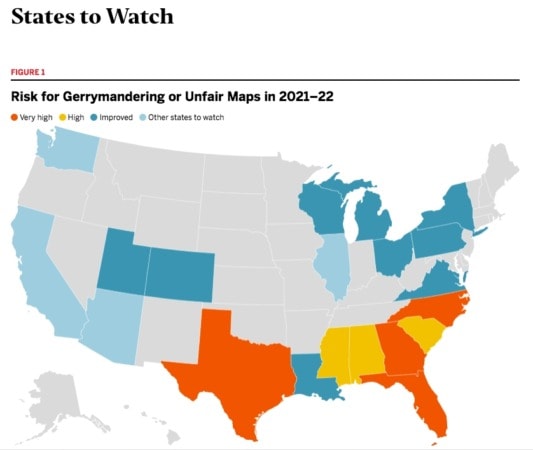
Under the best of circumstances, the redrawing of legislative and congressional districts every 10 years is a fraught and abuse-prone process. But the next round of redistricting in 2021 and 2022 will be the most challenging in recent history. Even before the Covid-19 pandemic, intense fights over representation and fair maps were all but certain in many states due to rapid demographic change and a weakening of the legal framework governing redistricting. Invariably, communities of color would bear much of the brunt, facing outright discrimination in some places and being used as a convenient tool for achieving unfair partisan advantage in others.
Covid-19, however, has further upended the redistricting cycle by delaying the release of data needed by states to draw maps, and in turn delaying redistricting.
This report looks at the upcoming redistricting cycle through the lens of four factors that will influence outcomes in each state: who controls map drawing; changes in the legal rules governing redistricting over the last decade; pressures from population and demographic shifts over the same period; and the potential impact of the Covid-19 pandemic on […]











I think we should get rid of the electoral college altogether. Every vote should count on it’s own; that way everyone’s choice would be insured.